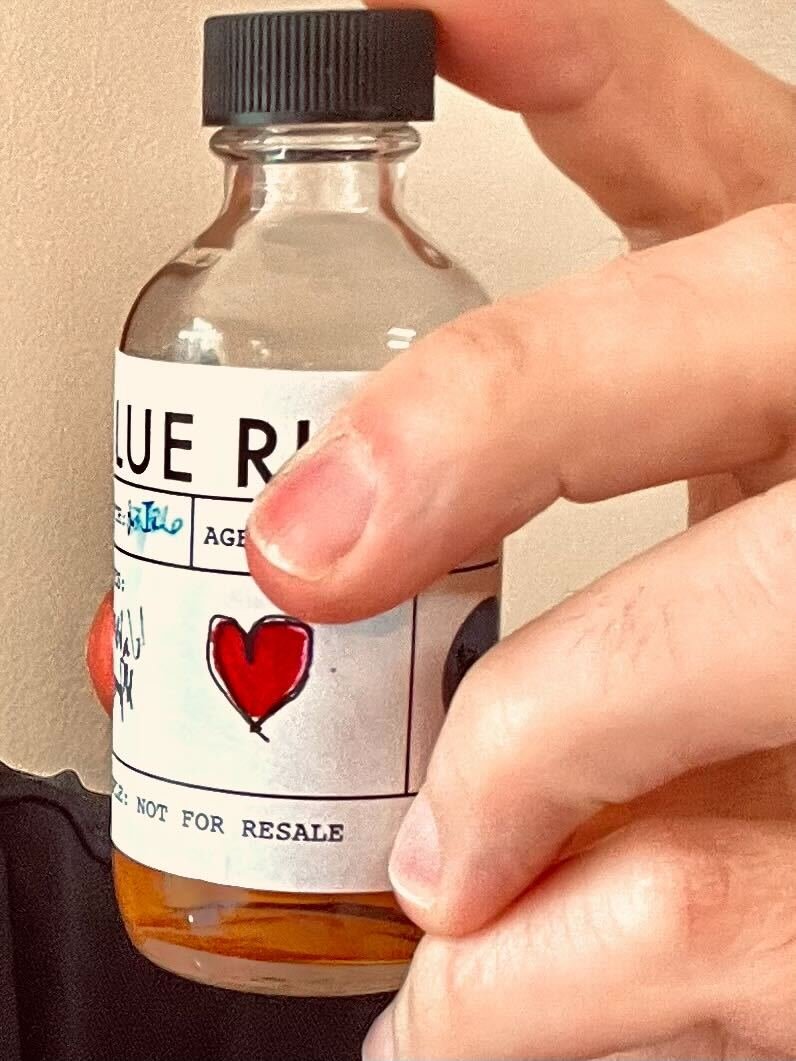This luxury bourbon producer has thought deeply about the mystery of time
By Mary L. Dudy and Stephane Fitch
As CEO and co-founder of Blue Run Spirits, a luxury Kentucky whiskey company, Mike Montgomery has thought a lot about time. His bourbon can age for 13 years and cost more than $200.
Forbes says you are “sneakerizing the bourbon industry.” Are you trying to modernize bourbon?
Absolutely. Whiskey consumers are more diverse today. But in the store, you’ll see that the majority of the bottles have ancient-looking paper labels. They use the word “old.” The implication is that the brand was alive pre-prohibition and was somehow salvaged through the wreckage. We got Devon McKinney, a rockstar designer behind some of Nike’s most iconic sneakers, to help us bring alive a modernized vision of the industry.
Whom do you want your bourbon to appeal to?
Blue Run was founded on the principles of aspiration and inclusivity. We aspire to be the go-to brand for the modern, diverse spirits enthusiast. It’s clear that younger people of drinking age, people of color and women are enjoying the American whiskey experience to a large degree, with Blue Run filling this void in the market. We were recently at South by Southwest and were thrilled that Raekwon enjoyed his first Blue Run experience there, calling Blue Run his “favorite new bourbon on the market,” which underscores the broad reach we’ve been able to achieve in just a few short years.
What's happening in that cask when bourbon ages?
The beauty of the seasons. Consider a barrel to be a sponge that will pull in and push out liquid as it contracts or expands based upon temperature. It's getting all that wonderful oakiness, all the different chemical compounds from the charring of the barrel that make people think of vanilla and caramel scents and flavors, for example. Each barrel provides uniqueness to the liquid inside.
Have you ever tasted one-year-old bourbon versus 13-year-old versus 26?
I’ve tasted distillate at one-minute old. It’s clear because it hasn’t been barreled yet. To me, it lacks any complexity, though I don't have the palette that Jim Rutledge or Shaylyn Gammon have. Jim and Shaylyn know what’s good when it’s still in its adolescence. But the journey that this liquid takes is fascinating. It starts as one thing, and as it ages it matures and grows, like everyone and everything else.
And yet this doesn’t necessarily give you a better bourbon?
I sent Jim some samples of 15-year-old bourbon a couple of years ago. He said “I gotta tell you — this tastes like pine tar on a baseball bat. Don’t buy it.” About six months later, we started seeing those 15-year bottles pop up on the shelves — at exorbitant prices.
So it’s like wine in that it has a magic moment?
Absolutely, though there’s more to it. Maybe the quality of the distillate made things go wrong early on. You can have the same mash bill, the same percentages of grains that go in, but one batch is made a day later and therefore different. It could be because of the yeast that’s in the air or the temperature that day. It could be the quality of the corn. There’s something romantic about the idea of putting a product into a container and then seeing where it’s at four, seven, 15 years later. There’s a magic that comes down to skill and patience.
Jim and Shaylyn have to check on it and maybe ask for another 6 months?
Yeah. We’re working on a product now that we tasted maybe six months ago. I wasn’t sure what we had. And I’ve got a sample of it here. [Pulls out sample bottle] It’s night and day.
What’s that on the bottle?
I drew a heart on it! This [shows another bottle] is the previous sample, when it was younger. There’s no heart on it. Six months in the barrel and getting through another summer has made it great. And maybe it needs another winter, we’ll see. Where it is today is not where it’s going to end up. And that’s what it’s like for all of us. People talk about being in their prime, but, God, who knows what or when our prime actually occurs.
Is there ever any tension about your lack of time in the industry from industry watchers and competitors?
When we first launched, a lot of people asked, “How can you be a startup and have 13-year-old bourbon?” It’s possible because we basically bought time by purchasing a number of exquisite barrels that Jim blended perfectly. It’s generally a friendly industry with a lot of people very willing to share their insights and experiences.
How do you balance the demands on your time?
I take a hybrid approach. My work ethic comes from my parents — though I don’t want to work myself until I’m green with exhaustion, as my dad did. I want to be available to my daughter and wife whenever they need me, and I want to continue with the habits that make me feel great, including a healthy diet and exercise. Life is busy, though, and I do the best I can to balance my responsibilities.
Does that ever clash with your responsibilities as the co-founder of a hugely successful new business?
It does. There are hours that go to Blue Run that can’t then go to the families of the people who are involved with it. What you get when you buy a bottle of Blue Run is nature’s time, sure, but also the time of every human whose life was part of the process of getting the bourbon onto a shelf. I showed you this bottle [pulls out bottle again]. You see that it’s three-quarters full. It’s got air in it. And that air is space and time. All things require a balance of space and time.
As a journalist, Stephane Fitch spent two decades battling clocks ticking down to tight deadlines. Stephane is an investor in Blue Run Spirits, Inc. As a professor of English literature, Mary L. Dudy’s conversations with Shakespeare required her to unwind centuries of scholarly work. Read more about them or this series of interviews about time.



